Cycloids of Revolution (Spirograph patterns.)
If you roll a circle along a straight line then the curve generated by a point on the circle's circumference is known as a cycloid.
If you roll a circle (c1) along a the outside of another circle then the curve generated by a point on the circumference of c1 is known as an epicycloid.
If you roll a circle (c1) along the inside of another circle then the curve generated by a point on the circle's circumference is known as a hypocycloid.
|
Cycloids and their related curves are much easier to execute in GeoGebra than in Logo or Excel. All you need is the maths below and the parametric curve command. Curve[x-expression, y-expression, parameter,parameter start, parameter finish] Curve[(a + b)*cos(wa*t) + b*cos(wb*t), (a + b) sin(wa*t) + b*sin(wb*t), t, -100, 100] Curve[(a + b)*cos(wa t) + (b + c)*cos(wb*t) + c*cos(wc*t), (a + b)*sin(wa*t) + (b + c)*sin(wb*t) + c*sin(wc*t), t, -100, 100] Use sliders to control the parameters a,b and c in the equations. The GeoGebra worksheets for these can be downloded here: Cycloids, Megacycloids. | ||
Cycloid |
Epicycloid |
Hypocycloid |
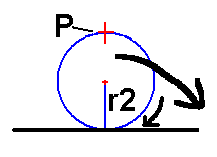 This is the basic image to use when trying to understand the other two curves. |

|

In the epicycloid the rolling circle rolls clockwise and rotates clockwise. |
 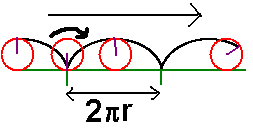
|

|
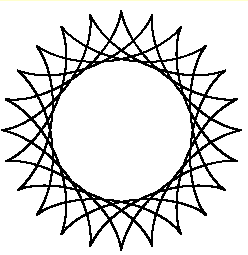
|
Theory | ||
|
Imagine that our circles are start on top of each other and then the smaller one rolls clockwise around the larger one. We need a program that does a few straightforward things:
|

|

|
|
This program draws epicycloids and hypocycloids.
to cyc2 :r1 :r2 :r3 :plots
2*PI*r calculates the circumference of a circle. t the distance moved by the circle divided by circumference gives the fraction of the a full 360 degree rotation that the circle must turn through to do this. Save and exit then type this command to test your code: cyc2 50 50 50 2500 |  You should get this shape. Read the notes with the introductory (and other) diagrams to understand why. Remember |
Further tests. | ||
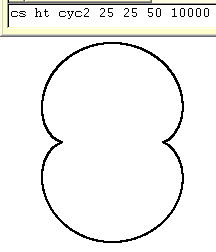 The rolling circle has half the radius of the stationary one. |
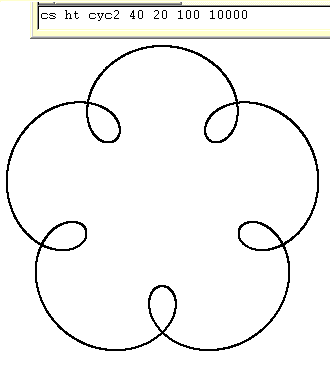 The rolling circle has one fifth the radius of the stationary one. |
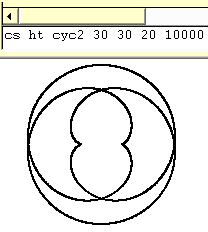 The rolling circle has a radius 3/2 times greater than the stationary one. |
Further challenges. | ||
 The radius of the rolling circle is a factor of that of the stationary circle. Use this to predict how many loops or orbits you need to obtain a closed loop. What happens if r2 is not a factor of r3? |
 This is the hypocycloid version of the previous curve. You can generate hypocycloids with your existing program. How can you draw a hypocycloid? It is quite easy to modify your program to generate cycloids. Try to do this too. |
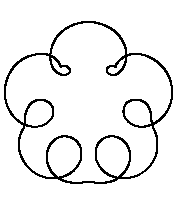 This is what happens if the stationary circle in your version of the program is made to rotate around another circle! Modify your program to allow the stationary circle to roll as well. |
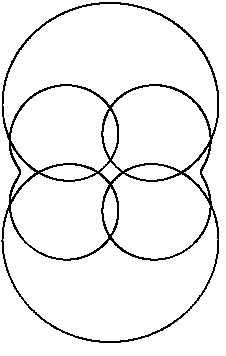 |
 |
 |